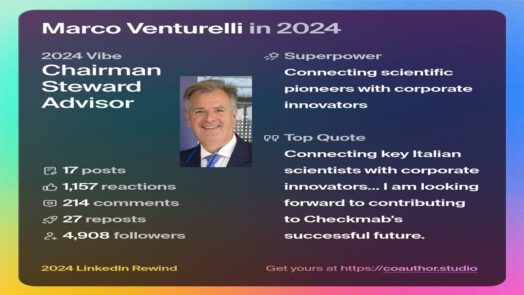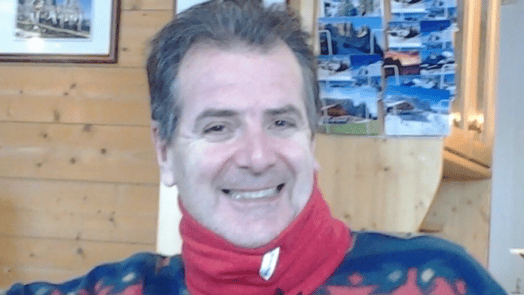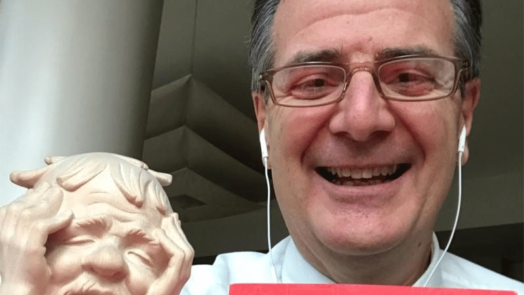Healthcare


Patients (crowd)sourcing via RWE can improve practice of Medicine?
The potential of RWE
In a recent article on PMLive, Danny Buckland, an health journalist, says: “Using RWE – derived from multiple sources across clinical, commercial and social settings – is seen as a way of improving therapeutic outcomes and opening up vistas of new pricing and reimbursement structures. Data washes around healthcare systems but often evaporates because its power has been difficult to identify and harness. We live in data-rich times. It streams from electronic health records (EHR), claims databases, registries and lifestyle software so it makes sense to use it. But its collection and context is varied with anything from idiosyncratic hospital coding to machine and human input error introducing bias into the formula. A need for caution was highlighted by the US Food and Drug Administration (FDA) in a debate primer published in the New England Journal of Medicine in December that stated: ‘If we are to realise the full promise of such evidence, we must be clear about what it is and how it can be used most effectively”
Official Medicine still skeptic
Dr Antonis A Kousoulis, RWE consultant, echoes FDA concerns: “When considering the use of RWE as sources of evidence towards best practice (though), we need to be mindful that Research via Clinical Trials (RCTs) remain the gold standard. Entirely disrupting the status quo of the process of developing guidelines will still take a few decades, especially in developing countries, but with such unmet need and unequal access to care, we should not allow (what is thought to be) ‘best’ to become an enemy of ‘good enough’. RWE could indeed help with the dissemination of key information by bridging the knowledge gap for clinicians and by improving the quantity and quality of evidence used in guidelines. This translational process is already happening. In a recent systematic review we noted that RWE from a UK electronic medical record database has been used inconsistently, but increasingly, in the last decade to inform guidelines published in the country. The increased uptake in recent years shows that this area of R&D in healthcare is changing and we are now working during a phase in this transition.To fully capitalise on the potential value of using RWE, researchers need to ensure they undertake research of translational value to the healthcare community. (..) It will take a structured and collaborative multidisciplinary approach to look to the future and overcome the barriers to making best use of RWE, namely: capacity and cost, skills and resource, and technology and access, all while maintaining public trust. Cross-sector collaboration will be the catalyst to enable global synergies and the positive shift in the reality versus expectations scale.”
Industry more optimistic
Danny Buckland interviewed also industry representatives: ”Michael Seewald, global head of real world evidence at Novartis, which has established a Centre of Excellence, believes RWE has multiple uses. “First and foremost RWE has a key role to play in post-approval settings,” he says. “Regulators are looking for ways to understand benefit-risk. Payers are increasingly challenging the value of new health technologies. RWE can help to demonstrate value vs standard of care. In addition, RWE is uniquely helpful to highlight how care is provided in real life, ie how ill patients are, which medications are provided to them, what the burden of disease is today.” “It is increasingly powerful to characterise patient populations and their outcomes,” he adds. “Clinicians recognise the value of disease registries and databases, as they supplement their strong clinical knowledge with data from routine clinical practice across various geographies. We do see significant value in RWD informing the design of clinical trials, portfolio management of R&D projects and also helping to improve the operational aspects of clinical development”. Novartis has used RWE extensively across its oncology portfolio and Seewald feels that improved data collection should help industry become stronger and improve outcomes for patients. Catherine Reed, of global patient outcomes and real world evidence at the Lilly Research Centre UK, views Europe as a key player in developing RWE. Lilly, which has spent around $3bn on researching Alzheimer’s treatment, believes its public-private partnership in an Innovative Medicines Initiative project, led by the University of Oxford, could unlock key factors in combatting the condition. The ROADMAP project is interrogating RWE across Europe with the aim of creating a better ethical, legal and social framework. One of its aims is to ‘identify RWE in Alzheimer’s to better inform the future regulatory environment – for regulators on matters of efficacy and safety and medicines; for medicines manufacturers on building a sustainable payer environment; and for providers on cost-effectiveness’. Reed sums up the potential: “With the help of real-world evidence, the entire population becomes the decision-making laboratory.” .”Then it appears that the journey of AI could be especially helpful for health care facilities that can’t afford a Dr. House”, says Venkat Rajan, who has the great title of global director for the company’s Visionary Healthcare Program; places that have, for example, a general cardiologist rather than a team with different subspecialties. This will “democratize” diagnosis and care, he says. Computer-aided diagnosis can weigh more factors than a doctor could on their own, such as reviewing all of a patient’s history in an instant and weighing risk factors such as age, previous diseases, and residence (if it’s in a heavily polluted area) to come up with a short list of possible diagnoses, even a percent confidence rating that it’s disease X or syndrome Y. Much of this involves processing what’s called “unstructured data” such as notes from previous exams, scan images or photos. This new era will allow patients, similarly to the introductory example, to have his/her personalized approach with the right medicine and the best treatment”.
Patients (crowd)sourcing: an alternative?
Reports Anthill, in its website, that in the recent Web Summit Lisbon Crowdsourcing is now established in life sciences, as demonstrated by the quality and ingenuity of the new medical devices and technologies at the Patient Innovation Awards. So while experts and companies are debating about how to use the richness of data already available patients, care-givers and inventors have crowdsourced an amazing set of relatively simple but well-designed solutions to problems that have not been addressed directly by medical devices companies.” Can Patient(crowd) sourcing become the accelerator of data use? A patient full health history could be in an electronic format given to the patient who then can decide to participate directly in crowdsource programs that contribute to a better understanding of his/her disease. If we do not democratize the system “entirely disrupting the status quo of the process of developing guidelines Dr Antonis A Kousoulis, states will still take a few decades”….Patients may not be willing to wait that long.
Can a recent success story help to expand use of AI in Clinics?
(Freely adapted from a recent Economist article)
“The Candidate looked at her. Margherita, a Database Engineer, kept her eyes on him. ‘Yes, this is what our AI system suggests. When you spoke about ‘building a Wall’, consumptions of barbecue carbon have increased in Dallas. AI crosschecked Credit card data and Facebook posts and it is sure: there is a subpopulation surely sustaining it. When you said that ‘a Car is a Car only if locally produced’, in Northwest Detroit the daily purchases of ‘Six pack’ were 35% above the average de-seasonalised. Instagram had an increase of thumb ups on a picture of a locally built car and Afro-Americans above 45 were identified as the most favorable to your statement. When you said that it is more important to secure what is ‘within our borders’, AI detected 25 groups to be contacted’. Trust AI, ‘he’ says that with 3 ‘youtube videos’ on this matter and 5 personalised emails, past statistics show they will vote for you”
Has this conversation ever happened? I do not know. What I know, I have heard from an interview made by Radio24 to an engineer, working for Cambridge Analytica. According to their website: “Targeting Communication has changed. Blanket advertising no longer provides viable ROI for every campaign. Big data revolutionised the way organisations identify and locate their best prospects. But data alone isn’t enough. Cambridge Analytica is building a future where every individual can have a truly personal relationship with their favorite brands and causes by showing organizations not just where people are, but what they really care about and what drives their behavior. Powered by smarter data modeling at Cambridge Analytica we use data modeling and psychographic profiling to grow audiences, identify key influencers, and connect with people in ways that move them to action. Our unique data sets and unparalleled modeling techniques help organizations across America build better relationships with their target audience across all media platforms.”
The success of politicians and their wide use of Big Data and available information to support their campaigns could further accelerate the AI applications in the Clinics. Politicians, under pressure of their voters, requiring a more personalised diagnosis and treatment, could include it in their agenda. The more politicians understand its power, the more they will sustain it. So the successful story of Cambridge Analytica can benefit many.
More than six billion dollars
That’s how many health care providers and consumers will be spending every year on AI tools by 2021—a tenfold increase from today—according to a new report from research firm Frost & Sullivan. (Specifically, it will be a growth from $633.8 million in 2014 to $6,662.2 million in 2021.) AI will be everywhere—from diagnosing cancer to providing weight-loss coaching, says Venkat Rajan, who has the great title of global director for the company’s Visionary Healthcare Program. “Prior to 2015, most of what was happening was sort of academic: pilot programs, exploratory, proof of concept-type stuff,” he says. “And now you’re actually seeing commercial usage.”AI’s ability to sort through scads of information, and remember everything it has ever seen, could enable a digital (and congenial) version of Dr. House, the brilliant diagnostician from the eponymous TV show, says Rajan. “At first, it’s a complete mystery, it could be one of ten different things,” he says, about the process in the show, and real life, called differential diagnosis. “And then he’s able to sort through various issues, you know, illuminate certain factors on why it’s not one of these other conditions, and he’s able to pull something from memory that figures out ultimately what it is, and they can provide the appropriate treatment.”
The power of AI in assisting Clinical Care in Cancer
How powerful would be to have AI assisting Clinical care? As reported by The Economist: “today delineating the edges of tumors in images generated by MRI machines and CT scans is done by hand. This is tedious and long-winded (it can take up to four hours). AI can reduce the time to minutes, or even seconds-and the results are completely consistent, unlike those arrived at by human doctors. AI utilized a very standard and detailed approach to analyze every pixel of the image and detect any minimal discrepancy. Another example of AI’s move into the clinic is described in a recent paper in JAMA. This paper showed that it is possible to use AI to detect diabetic retinopathy and macular edema, two causes of blindness, in pictures of the retina. Enlitic, a new firm based in San Francisco, is using AI to make commercial software that can assist clinical decisions, including a system that will screen chest X-rays for signs of disease. Your.MD, a firm based in London, is using AI, via an app, to offer diagnoses based on patients’ queries about symptoms. IBM is also, via Watson, involved in clinical work. It is able to suggest treatment plans for a number of different cancers. All this has the potential to transform doctors’ abilities to screen for and diagnose disease”.
An alliance, announced this week, sustains a similar point: “Profiling tumors using genomic information is critical for complex cancer cases, and next-generation DNA sequencing – the process of rapidly profiling large sections of the genome in parallel to find mutations – is increasingly being used for this. However, challenges remain in developing ways to rapidly and accurately interpret genomic findings in the context of a patient’s condition. While cancer patients can have hundreds of gene variants in their tumors, only a small number may actually drive the individual’s specific cancer or may have actionable therapeutic implications for a particular patient. The patient’s history, related lab tests and cancer type are needed for a meaningful interpretation of the genomic data. Philips and Illumina will collaborate to provide new solutions aimed at the acquisition, analysis, annotation and interpretation of genomics data in oncology cases. The data will be acquired by Illumina’s BaseSpace® Sequence Hub connected to its instruments and will be processed through Philips’ IntelliSpace Genomics solution for oncology. This solution will combine data from multiple sources – radiology, immunohistochemistry, digital pathology, medical records and lab tests – and will deliver a consolidated dashboard view. This system will support researchers to develop insights more efficiently and will ultimately support lowering the cost of health care delivery and improved health outcomes”.
“The value of genomic information for personalized care, and for the treatment of patients with cancer in particular, is tremendous,” said Jeroen Tas, CEO of Connected Care and Health Informatics at Philips. “Until now the ability to use genomic data with the aim of having a precise diagnosis of cancer and improve treatment was mostly for the domain of academic centers. Through this collaboration we will unlock the value of genomics for a much wider group of laboratories and care providers to help them advance genomics initiatives at greater speed with the aim to offer precision medicine with better outcomes for their patients.”
Reducing Mistakes
“They’re stressed, they’ve got a million different things they’re looking at, so [there’s] stuff they might have missed” says Rajan. Doctors’ and nurses’ mistakes could kill more than 250,000 people in the U.S. every year, according to an estimate from Johns Hopkins University School of Medicine. If you put that figure into the Center for Disease Control and Prevention’s list of the top causes of death, it would be third—right behind heart disease and cancer. “Where big data will be used it won’t steal doctors’ jobs, says Rajan, but they will spare overworked docs some of the dangerous fatigue that can lead to mistakes. Other staffers, such as almost-doctor nurse practitioners might do the initial workup before a specialist comes to review the results and make a call about how to proceed. AI could be especially helpful for health care facilities that can’t afford a Dr. House, says Rajan; places that have, for example, a general cardiologist rather than a team with different subspecialties. This will “democratize” diagnosis and care, he says. Computer-aided diagnosis can weigh more factors than a doctor could on their own, such as reviewing all of a patient’s history in an instant and weighing risk factors such as age, previous diseases, and residence (if it’s in a heavily polluted area) to come up with a short list of possible diagnoses, even a percent confidence rating that it’s disease X or syndrome Y. Much of this involves processing what’s called “unstructured data” such as notes from previous exams, scan images or photos. This new era will allow patients, similarly to the introductory example, to have his/her personalized approach with the right medicine and the best treatment.
So famous Isaac Newton’s sentence in 1676: “A dwarf on a giant’s shoulders sees the furthest of the two” will change to “A doctor on AI shoulders will prolongue and facilitate patients life”
1/14/17
Search original articles and references if you are interested to know more:
https://cambridgeanalytica.org/
Universal health care, worldwide, is within reach

BY MANY measures the world has never been in better health. Since 2000 the number of children who die before they are five has fallen by almost half, to 5.6m. Life expectancy has reached 71, a gain of five years. More children than ever are vaccinated. Malaria, TB and HIV/AIDS are in retreat.
Yet the gap between this progress and the still greater potential that medicine offers has perhaps never been wider. At least half the world is without access to what the World Health Organisation deems essential, including antenatal care, insecticide-treated bednets, screening for cervical cancer and vaccinations against diphtheria, tetanus and whooping cough. Safe, basic surgery is out of reach for 5bn people.




